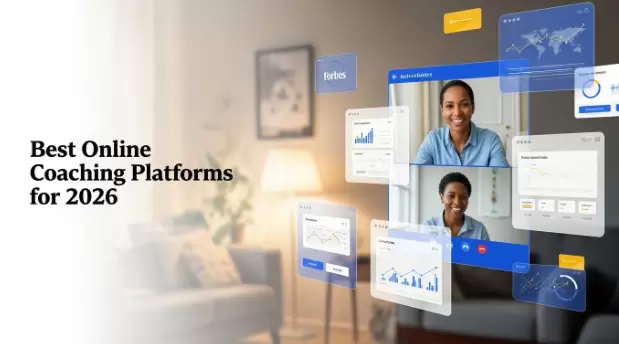Cold outreach can be a successful marketing tactic for businesses in nearly any industry, especially when utilizing email. Email conversions are three times higher than social media; the average email marketing ROI is $36 for every $1 spent.
You're not alone if your company’s cold outreach campaigns have been less than impressive. Cold outreach requires much effort, research, and patience to succeed. But it can also be a powerful tool for growing your clientele and business.
This blog will share some best practices for crafting successful cold outreach campaigns, from developing qualified sales leads to tracking and optimizing. With these tips and strategies, your sales team can turn cold leads into loyal customers.
What’s So Hot About Cold Outreach Campaigns?
A cold outreach campaign is reaching out to individuals or businesses that haven’t interacted with your company. Cold outreach aims to initiate a conversation that converts a prospect into a customer.
Successful cold outreach campaigns can lead to a variety of benefits, including:
- Increased sales - An effective cold outreach campaign can generate more sales and revenue.
- Improved communication - With clear and concise messaging, better communication with prospects can lead to better outcomes.
- Increased brand awareness - Well-crafted campaigns can help build brand awareness and establish a company as a trusted authority in its industry.
- Cost-effective marketing - Compared to other marketing strategies, cold outreach can be a low-cost yet practical option for companies with limited marketing budgets.
Overall, cold outreach can help businesses achieve their sales and marketing goals.
Five Strategies for Improving Your Sales Team's Cold Outreach Process
Cold outreach can be time-consuming and challenging. But it can also be extremely rewarding when done correctly. Here are five strategies your sales team can implement today for a better cold outreach process.
1. Find the decision-makers
Not all sales leads are created equal. Interest alone isn’t enough to make a potential lead a qualified lead. Your sales team has to find the decision-makers.
Decision-makers are the individuals who have the authority to make purchasing decisions and can significantly impact the success of your sales efforts. While a lead may be impressed with your product or service, they can’t convert if they don’t have purchasing power within their company.
To find the decision-maker within an organization, start by researching the company's hierarchy and key executives. While search engines can be beneficial, business intelligence software for sales leads can speed up the process.
To get more hands-on, attend industry events to meet with people who work for the organization and potentially identify key decision-makers or reach out to your network for any inside tips.
Keep decision-makers organized by using online tools and databases. Segment your list of decision-makers based on various criteria such as company size, industry, and location. Breaking down your leads list allows personalized messaging to fit each prospect's specific needs and interests, increasing the chances of conversion.
2. Uncover email addresses quickly and accurately
With a list of qualified decision-makers in hand, it’s time to track down the best email to reach them. While this can be a challenge, there are a few ways to make the process easier. For example, finding an email address via LinkedIn is possible in just a few steps, as laid out below.
- Search for a prospect on LinkedIn using their full name, job title, and company.
- Once you find them, explore their contact information for an email.
- If one isn’t listed (which is common), try connecting with them and sending them a message asking for their email.
- If you’re not connected with them, you can also try an InMail message. However, this requires a Premium subscription.
If you’re not having any luck, you can always try guessing your potential lead’s email address using a common format. Examples include:
- firstname@business.com
- firstname.lastname@business.com
- firstinitial.lastname@business.com
If all else fails, you can also try using a third-party tool to help you track down a decision-maker’s email. Such tools can save time and effort in finding emails; the information is usually current.
3. Set up automated workflows
Automating workflows is a powerful way to improve the efficiency of your cold outreach campaigns. By allowing your sales team to focus their energy on high-touch activities while letting technology handle the rest, you can reduce administrative tasks while improving communication consistency, lead tracking, and segmentation.
Your sales team can choose from a wide variety of email automation software. But no matter which is the best email automation tool for your needs, here are some key components to include when automating the workflow of a cold outreach campaign:
- A target audience - The benefits of an automated workflow can be lost if a target audience isn’t clearly defined. A tailored approach allows for maximum impact.
- A message template - Create a template you can customize and personalize for each lead. Beyond personalization, ensure the template includes your value proposition, the benefits of your product or service, and a call to action.
- A schedule - Establish a schedule for your campaign that includes the frequency and timing of each message.
It's important to note that while automation can be a powerful tool, it's essential to strike the right balance between automated and personalized communication. Sales teams should regularly review their workflows and make adjustments based on results to ensure their messaging resonates with their target audience.
4. Craft compelling outreach messages
Even if you’re reaching the right audience in the right place and time, it won’t matter if your message isn’t striking a chord. So here are some tips to help your sales team create compelling messages that engage your prospects and encourage them to take action:
- Write a catchy subject line - The subject line is the first thing your prospect will see, so make sure it's attention-grabbing and relevant. Personalization, humor, and urgency are all effective strategies for creating subject lines that boost open rates.
- Personalize every message - Personalizing email content shows that you’ve done your research and makes a prospect feel valued. Tailor each message to a lead’s needs and interests (segmentation makes this easier) and always address them by name (automation tools can simplify this step).
- Include social proof - Find a way to creatively weave case studies, testimonials, and other proof points to show how your product or service has been successful for others. Social proof is a powerful motivator and quickly warms up a cold lead.
- Keep it concise - Less is better with cold outreach. Keep messaging short and to the point. Emails between 75 and 100 words get the highest response rates. Focus on your product's benefits without dragging out paragraphs or using complicated language.
- Create a clear call-to-action - Wrap up any message in a cold outreach campaign with a clear call-to-action. Encourage prospects to take the next step, whether checking out a case study, scheduling a demo, or signing up for a trial.
With the right message, your sales team can capture a prospect’s attention and turn them into a qualified lead. But because crafting compelling messaging takes time and practice, the next tip is crucial.
5. Track, optimize, repeat
Track and optimize your cold outreach campaigns until they perform as desired. Your sales team can achieve its goals without starting from scratch by measuring campaign performance, analyzing the data, and optimizing for improved results.
Here are a few steps to follow:
- Track the performance - To measure the performance of a campaign, track metrics such as open rates, response rates, and conversions. Metrics can vary by audience, campaign, and goals.
- Analyze the data - With a mountain of data to explore, start identifying trends and patterns that shine a light on what’s working and what’s not. Data-driven decisions are based on objective facts and figures rather than subjective assumptions, ultimately leading to better business outcomes.
- Optimize the campaign - Optimizing means making changes and improvements. Poor performing email subject? Try a different tone. Weave it into multiple touch points of the campaign.
- Test, test, and test again - Even after optimizing a cold outreach campaign, a company should continuously test it to ensure it remains effective and efficient. Testing can help identify new opportunities for improvement, avoid stagnation or decline in performance, and adapt to market or target audience changes.
Tracking and optimizing cold outreach campaigns is critical for achieving success and maximizing ROI. By tracking results and making data-driven decisions to refine and improve outreach efforts, companies can gain valuable insights, stay competitive, and adapt to market and target audience changes.
Optimizing Your Cold Outreach: An Ongoing Process
Optimizing your cold outreach campaigns requires a strategic approach involving developing sales leads, creating targeted lists, automating outreach workflows, crafting compelling messages, and tracking a campaign’s performance. By following these best practices, your sales team can increase its chances of success and achieve challenging sales goals.
If you're looking for an all-in-one digital marketing platform to help you streamline your outreach efforts, check out Zumvu, which offers a range of tools and features to support your cold outreach campaigns. Request a demo today.


 Table of Content
Table of Content










